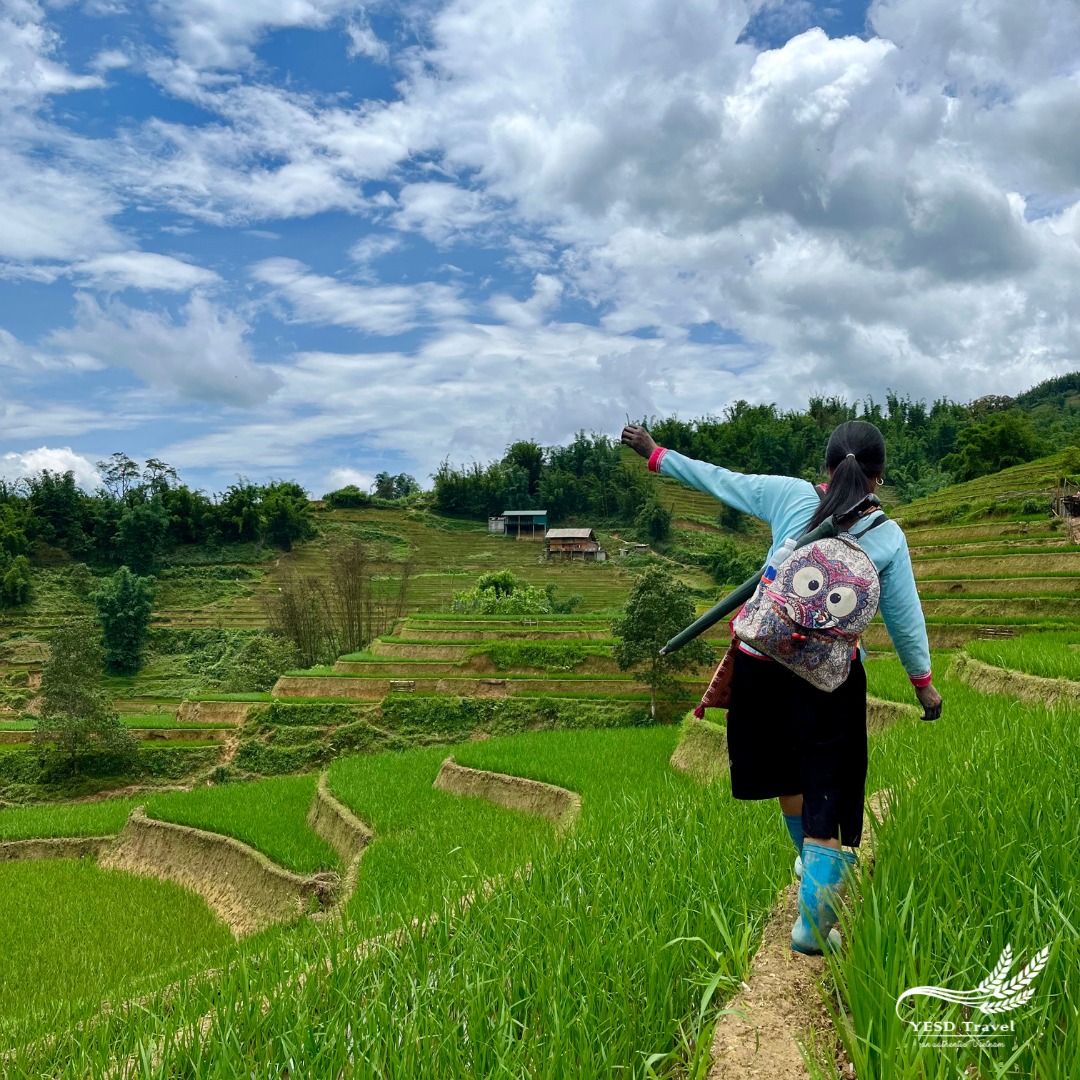The weather in Vietnam is divided into different regions: North, Central and South. Vietnam’s climate falls under the tropical monsoon category. The whole country falls within the tropical zone and lies at the southeastern end of the Asian continent bordering the East Sea. This positioning means that Vietnam’s climate is directly influenced by the trade wind monsoon pattern, which typically operates in low-latitude regions. From tropical beaches to cool highlands, let’s explore Vietnam’s climate, region by region.
Weather in Vietnam – North
Mountains in the far north
Sapa and Mu Cang Chai in the northwest of Vietnam have two clearly marked sharing seasons. The first season is in place from October to March end, while April brings onset of another that lasts all the way through up to September with heavy downpours characterizing it. Snow maybe experienced during cold nights that fall either in December or January specifically mentioning Sapa and Mu Cang Chai.

While December and January may get quite cold, the dry season, which runs from October to April, is the ideal time of year to visit the northeast (Ha Giang). We advise against visiting
Ha Giang from May to September, when it rains a lot.The periods of March through May and September through November offer the ideal hiking conditions in Sapa and the surrounding area of Mu Cang Chai. The temperature during daytime hour in this region usually varies from 15 to 28°C but drops to between 10 and 18°C at night. Although trekking and cycling can be carried out in all seasons, winter tends to be very cold while summer is normally wet.
Winter and summer are the two different seasons in North Vietnam. This region includes Hanoi,
Ha Long Bay, Cuc Phuong, Mai Chau, and Ninh Binh. November through April sees a mild but mainly dry winter with average temperatures ranging from 17 to 22°C. January through March are the coldest months.

May through October is considered summer, a time of intense heat and humidity along with the most rainfall in the area. The wettest months of the year are typically July through September. Although it is uncommon, strong weather during these months might prevent junks from sailing in Halong Bay.
Weather in Central
Central Vietnam’s Hoi An, Hue, and Danang have hot, dry weather with frequent highs in the mid-30s °C from mid-January to late August. The quantity of rainfall typically increases significantly during winter to its peak levels in October and November. Typhoons can also sometimes occur during this time. Particularly early in the year, Hue is frequently colder than Hoi An. Furthermore, because they are situated on either sides of a short mountain range, the two frequently experience quite different weather on any given day.Slightly longer during the dry season because of its closeness to the southern system, Quy Nhon is a six-hour journey south of Hoi An and has comparable weather patterns.Nha Trang, in the extreme south of Central Vietnam, enjoys a prolonged dry season with plenty of sunshine and minimal rain, which usually lasts from January to September. The wet season falls between the months of October up until early December with the largest volume of rainfall experienced in November.During June and October, Dalat in the Central Highlands can be quite wet thereby making activities outdoors hard to participate in while it remains relatively dry from November through May with December – January months feeling quite cold all the same.
Weather in South
The South has two main seasons that determine its weather – rainy and long period of dryness, with temperatures that remains constant all year round. Late February to May is usually hotter and more humid than late January-early November while November to April are drier. June through to August experiences higher than average rains hence its known as the wet season while beginning in May ends before early November termed as rainy period. In most cases, it rains heavily within a short time during most parts of rainy season that normally occurs around four o’clock in the evening.
All year long, the south experiences average temperatures between 25 to 35°C.
Conclusion
The weather in Vietnam offers something for every traveler, no matter the season. Whether you’re exploring misty Ha Long Bay, trekking in Sapa, or lounging on the beaches of Nha Trang, there’s always a perfect time to visit. Pack accordingly, plan your activities around the weather, and enjoy the unique beauty each region has to offer.
 While December and January may get quite cold, the dry season, which runs from October to April, is the ideal time of year to visit the northeast (Ha Giang). We advise against visiting Ha Giang from May to September, when it rains a lot.The periods of March through May and September through November offer the ideal hiking conditions in Sapa and the surrounding area of Mu Cang Chai. The temperature during daytime hour in this region usually varies from 15 to 28°C but drops to between 10 and 18°C at night. Although trekking and cycling can be carried out in all seasons, winter tends to be very cold while summer is normally wet.
While December and January may get quite cold, the dry season, which runs from October to April, is the ideal time of year to visit the northeast (Ha Giang). We advise against visiting Ha Giang from May to September, when it rains a lot.The periods of March through May and September through November offer the ideal hiking conditions in Sapa and the surrounding area of Mu Cang Chai. The temperature during daytime hour in this region usually varies from 15 to 28°C but drops to between 10 and 18°C at night. Although trekking and cycling can be carried out in all seasons, winter tends to be very cold while summer is normally wet. May through October is considered summer, a time of intense heat and humidity along with the most rainfall in the area. The wettest months of the year are typically July through September. Although it is uncommon, strong weather during these months might prevent junks from sailing in Halong Bay.
May through October is considered summer, a time of intense heat and humidity along with the most rainfall in the area. The wettest months of the year are typically July through September. Although it is uncommon, strong weather during these months might prevent junks from sailing in Halong Bay.